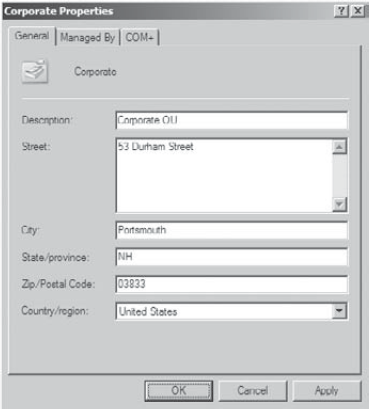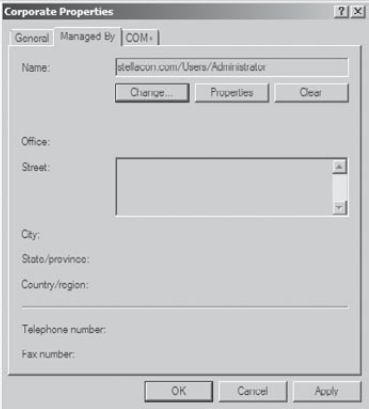2. Administering Properties of OUs
Although OUs are primarily created for
organizational purposes within the Active Directory environment, they
have several settings that you can modify. To modify the properties of
an OU using the Active Directory Users And Computers administrative
tool, right-click the name of any OU and select Properties; when you
do, the OU Properties dialog box appears. In the example shown in Figure 1, you see the options on the General tab.
In any organization, it helps to know who is
responsible for managing an OU. You can set this information on the
Managed By tab (see Figure 2).
The information specified on this tab is very convenient because it is
automatically pulled from the contact information on a user record. You
should consider always having a contact for each OU within your
organization so that users and other systems administrators know whom
to contact if they need to make any changes.

